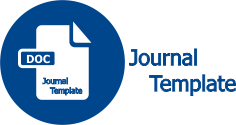Pengembangan LKPD Elektronik melalui Model Discovery Learning untuk Meningkatkan Kemampuan Berpikir Kritis Peserta Didik (Studi pada Materi Pokok Larutan Elektrolit dan Non Elektrolit)
(1) Universitas Negeri Makassar
(2) Universitas Negeri Makassar
(3) Universitas Negeri Makassar
(*) Corresponding Author
DOI: https://doi.org/10.26858/cer.v5i2.32723
Abstract
Keywords
Full Text:
PDFReferences
Ennis, R.H. (2011). Critical Thinking: Reflection and Perspective-Part I. Inquiry. 26(1).
Hamalik, Oemar. (2005). Perencanaan Pengajaran Berdasarkan Pendekatan Sistem. Bandung: Bumi Aksara.
Nurwahida., M. Mansyur., & M. Danial. (2018). Pengembangan Perangkat Pembelajaran Kimia Berbasis Discovery Learning Pada Materi Larutan Penyangga Di Kelas Xi Sma. Chemistry Education Review (CER), 2(1).
Prastowo, A. (2012). Panduan Kreatif Membuat Bahan Ajar Inovatif: Menciptakan Metode Pembelajaran yang Menarik dan Menyenangkan. Yogyakarta: DIVA Press.
Widana, I. W., Parwata, I. M. Y., Parmithi, N. N., Jayantika, I. G. A. T., Sukendra, K., & Sumandya, I. W. (2018). Higher Order Thinking Skills Assessment towards Critical Thinking on Mathematics Lesson. International Journal of Social Sciences and Humanities, 2(1).
Article Metrics
Abstract view : 427 times | PDF view : 35 timesRefbacks
- There are currently no refbacks.
Jurnal dipublikasikan oleh: Program Studi Pendidikan Kimia
Program Pascasarjana Universitas Negeri Makassar
Alamat JL. Bonto Langkasa Gunung Sari Makassar, 90222
Kampus PPs UNM Makassar Gedung AD ruang 406 Lt 4, Indonesia.Phone 082393643737/085145825311/085242228678
CER UNM Indexed by:

Chemistry Education Review (CER) is licensed under a Creative Commons Attribution-NonCommercial 4.0 International License.










